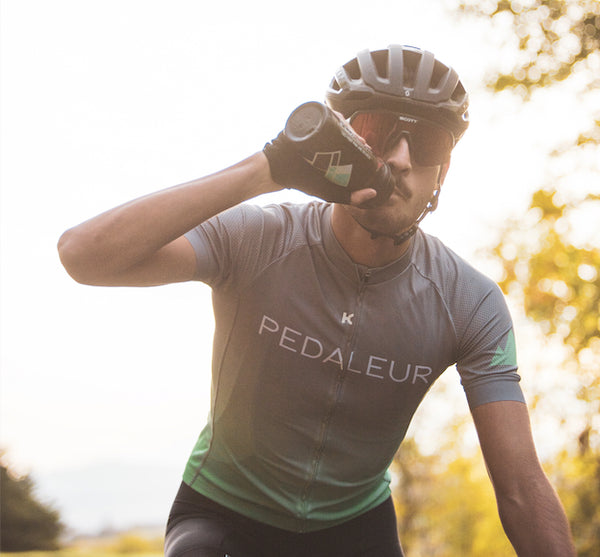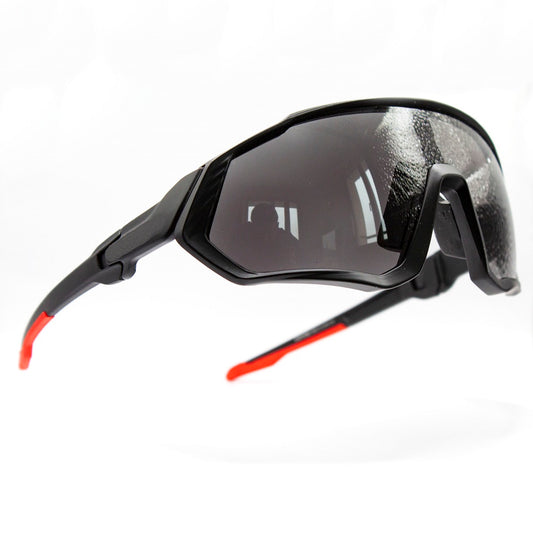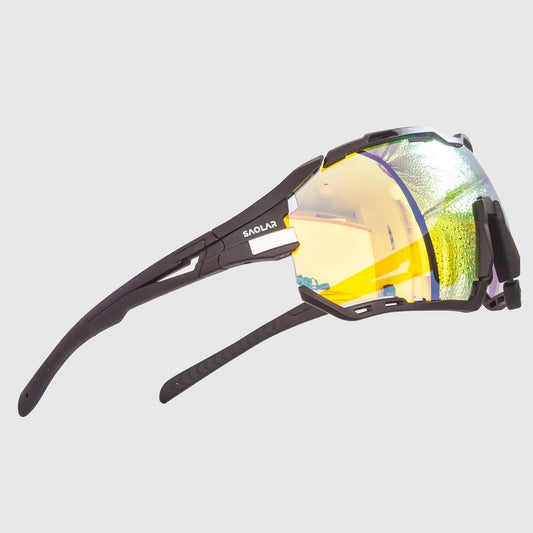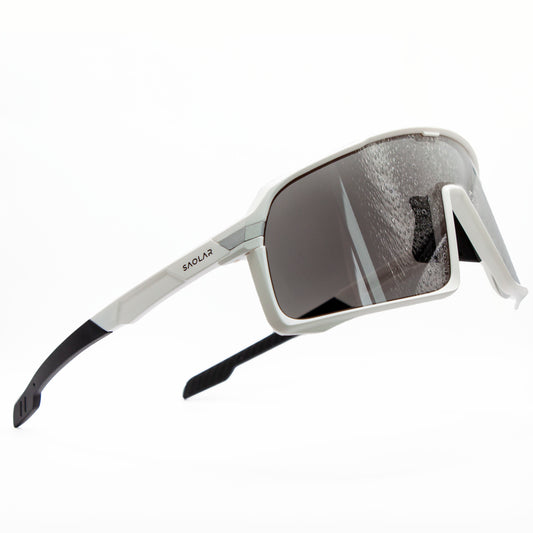The Vital Role of Cycling Hydration

The journey of a cyclist is often paved with sweat and endurance, where cycling hydration is not just a matter of quenching thirst but a critical element for performance and health. The act of pedaling under the sun, against the wind, or even in the cool brisk of dawn, draws moisture from the body at an accelerated rate. This loss, if not replenished, can lead to a significant drop in energy levels, reduced muscle function, and a longer recovery time.
Hydration for cycling goes beyond the simple act of drinking water. It's about understanding the intricate dance between fluids and electrolytes, and how they work together to maintain the delicate balance that allows cyclists to push through the last mile. The right hydration strategy can be the invisible companion that supports you up a steep incline or during a long, grueling race.
Engaging in any cycling activity, from a leisurely ride to a high-intensity sprint, demands a keen awareness of the body's hydration needs. It's not just about drinking when you're thirsty; it's about preemptively maintaining fluid levels to ensure optimal physiological functions. Blood volume, cooling mechanisms, and joint lubrication are all dependent on the body's hydration status.
As we set the stage to delve deeper into the best practices for cycling hydration, remember that every sip carries weight, and each drink has a purpose. Whether you are a weekend warrior or a professional racer, understanding the role of hydration is the cornerstone of any successful cycling endeavor. Stay tuned as we gear up to explore the ins and outs of what to drink, when to drink, and how to maintain the perfect harmony of hydration while cycling.
Remember to stay hydrated and keep your energy high for a smoother ride. For additional tips on maintaining cadence and enhancing your cycling experience, visit What is Cadence and Why It Matters in Cycling.
Electrolytes and Endurance - The Dynamic Duo of Cycling

In the realm of endurance cycling, the term cycling electrolytes refers to much more than a buzzword on a sports drink bottle. They are, in fact, pivotal players in the endurance athlete's performance. Electrolytes, which include minerals like sodium, potassium, calcium, and magnesium, facilitate critical bodily functions. They help conduct nerve impulses, contract muscles, and maintain fluid balance – all of which are essential when the body is under the physical stress of cycling.
Electrolytes for cycling become especially important as you start to push past the casual ride and into the threshold of endurance. On long rides, the balance of electrolytes can mean the difference between hitting the wall and breaking through it. As sweat is produced to cool the body, not only water but also these crucial minerals are lost. Replenishing them becomes essential to prevent cramping, fatigue, and dehydration.
The absorption of electrolytes is a dance that requires a fine-tuned balance, particularly for those who look to maintain a certain rhythm or cadence in their ride. The role they play in muscle function is akin to a conductor in an orchestra, ensuring that every part works in harmony. To maintain a smooth pedal stroke, something further explained in our piece on What is Cadence and Why It Matters in Cycling, a cyclist needs to be as diligent about their electrolyte intake as they are about their training schedule.
Whether your cycling sessions are characterized by intensity or duration, or a mix of both, understanding and integrating a strategy for electrolyte intake is a key component for success. In the following sections, we'll delve into the specific types of drinks that can help maintain this delicate balance, and how they can fit into your overall cycling hydration strategy.
The Spectrum of Cycling Drinks

When it comes to cycling drinks, riders have a vast ocean of options beyond the basic bottle of water. This range includes specialized hydration formulas, each designed to meet the diverse demands of cyclists at all levels. Beginning with the foundation of hydration—water—we understand its unmatched importance in maintaining basic bodily functions, especially during a light or moderate ride. However, as the intensity and duration increase, so does the need for drinks that offer more than simple hydration.
Enter the world of enhanced cycling drinks: electrolyte-infused waters, isotonic sports drinks, hypertonic carb loads, and hypotonic fluids for quick absorption. These formulations are engineered to replenish what the body loses through sweat and exertion. They can optimize hydration, provide immediate energy, and help maintain electrolyte balance, which is crucial for muscle function and overall performance.
It's important for cyclists to consider their unique needs, the climate, the intensity of the ride, and their sweat rate when selecting a drink. For example, a leisurely ride in a cool climate may only call for plain water, while a grueling climb on a hot day will likely require an electrolyte beverage to prevent cramping and fatigue. Similarly, for those looking to recover promptly post-ride, a protein-enriched drink might be the ticket to quick muscle recovery.
Understanding the spectrum of available cycling drinks is essential for optimizing both performance and recovery. To further complement your cycling wellness, integrating practices like effective stretching, as outlined in "Master Stretching for Cyclists in Minutes," can enhance flexibility and prevent injuries.
In the upcoming sections, we'll dissect the specific advantages and scenarios for each type of drink, ensuring you can make an informed decision for your next ride. From the simplest molecule of H2O to complex carbohydrate solutions, every cyclist's water bottle tells a story of personal performance goals and the pursuit of cycling wellness.
Sipping on Cycling Energy Drinks

The role of cycling energy drinks extends beyond simple hydration—they are concocted to cater to the cyclist’s need for sustained power and performance. Energy drinks for cyclists are specifically formulated to provide a quick and convenient energy boost, which can be particularly useful during long-distance rides or when tackling challenging terrains. These beverages usually contain a mix of carbohydrates and caffeine, both of which serve to delay fatigue and improve concentration.
However, the consumption of cycling energy drinks must be approached with caution. While they offer benefits, it’s vital to consider the potential downsides such as sugar content and caffeine's diuretic effects. High-performance cyclists often rely on these drinks for their convenience and immediate benefits, but balance and timing are key. The carbohydrates in energy drinks can aid in preventing glycogen depletion, while caffeine has been shown to increase endurance and reduce the perception of effort.
Despite the positives, cyclists should monitor their intake of cycling energy drinks to avoid gastrointestinal distress or over-caffeination. It is always recommended to trial these drinks during training sessions rather than on race days to understand how one's body reacts to the composition.
Moreover, cyclists should balance the intake of energy drinks with plain water and electrolyte solutions to ensure a comprehensive approach to hydration and energy replenishment. By tuning into their body’s signals and understanding the impact of various ingredients found in energy drinks, cyclists can effectively use these beverages to their advantage without compromising their health or performance.
In the next sections, we'll explore more on how to integrate various types of hydration strategies for optimal cycling success.
Cycling Carb Drink Insights
Carbohydrates are the fuel that powers cyclists through long distances and strenuous efforts, and carb drinks for cycling have become a staple for many. These drinks are designed not only to hydrate but to also provide a steady supply of energy in the form of easily digestible carbohydrates. This can be crucial, especially during extended periods of exertion when solid food may not be an option.
The science behind cycling carb drinks is clear: they offer a dual benefit. On one hand, they help maintain optimal hydration levels, and on the other, they replenish glycogen stores, which are the muscles' primary energy source during exercise. This dual action makes carb drinks highly efficient, particularly for endurance riders who need to sustain a consistent energy output over several hours.
The concentration of carbs in these drinks is formulated to allow for quick absorption without causing stomach upset. This balance is vital because too high a concentration can slow gastric emptying, leading to discomfort, while too little may not provide the energy needed to sustain effort. The key is to find a cycling carb drink that offers the right carb-to-fluid ratio for your body and the conditions you ride in.
Using carb drinks strategically during training and events can make a significant difference in a cyclist's performance. It allows the body to continue generating energy through the most accessible means, thus saving stored glycogen and potentially delaying or preventing fatigue.
For those looking to optimize their cycling performance further, incorporating effective communication on the road, such as hand signals, can enhance safety and efficiency. Learn more about this by checking out "Hand Turn Signals: Essential Guide for Cyclists."
In the next sections, we'll dive deeper into how to personalize your hydration and nutrition strategy for cycling, ensuring you can keep those wheels turning with vigor and vitality.
Managing Electrolytes for Cycling Success
Mastering the balance of electrolytes for cycling is akin to perfecting a complex recipe – each ingredient must be measured and added at the right time to achieve the desired result. For cyclists, this balance is not about culinary success but about achieving optimal performance and maintaining it throughout their rides. Electrolytes are crucial for numerous physiological functions, including nerve signaling, muscle contractions, and fluid balance, which are heavily taxed during intense cycling.
To maintain this balance, cyclists should consider the composition of their hydration options. Drinks containing sodium, potassium, magnesium, and calcium are key to replacing what is lost through sweat. A balance of these electrolytes can help prevent both dehydration and hyponatremia – a condition caused by low sodium levels.
The strategies for keeping electrolytes in check vary depending on the duration and intensity of the ride, the weather conditions, and individual sweat rates. For instance, on a hot day or during a particularly intense session, a cyclist might lean more heavily on electrolyte-rich drinks to compensate for increased losses.
It's also important to integrate electrolyte consumption with overall nutrition and hydration practices. Electrolyte tablets or powders can be added to water to enhance its replenishing properties, while certain carb drinks come pre-formulated with these vital minerals.
Understanding and managing electrolytes for cycling is not just about preventing negative outcomes; it's about creating a solid foundation for success. It allows cyclists to perform at their best, recover quickly, and get ready to tackle the next challenge on their cycling journey.
What to Drink During Cycling

In conclusion, crafting a personalized hydration plan is a key component of any cyclist's routine. Understanding what to drink during cycling is a deeply individual process that depends on factors such as the length of your ride, the intensity, environmental conditions, and personal sweat rates. It's not just about filling your bottle; it's about knowing with what and when to fill it.
The guidance provided herein aims to serve as a framework to build upon. Start with water, the essence of hydration, and then consider the inclusion of electrolytes, energy, and carb drinks, adjusting the mix according to your specific needs and responses. Whether it's a leisurely ride or a competitive race, the right drink can empower your performance, aid in recovery, and enhance the overall cycling experience.
As you refine your hydration strategy, remember that each cyclist's journey is unique, just as the reasons behind each tradition and habit, such as the insights on Why Cyclists Shave Their Legs: The Secrets Behind Smooth Rides, are unique. The key is to listen to your body, experiment with different hydration techniques, and ultimately, find what works best for you to stay hydrated and maintain the joy of cycling.




